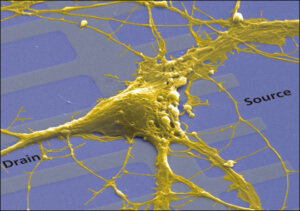Parts of a Tooth
While researching how to obtain whiter teeth, it has become apparent that understanding the parts of a tooth better is beneficial.
Below is a picture of the parts of a tooth. We’ll go into some details on what each part is.
And, since this web site tends to focus on Dazzling White Teeth, we’ll also talk about how teeth whitening comes into play for each of the parts of a tooth.
Do You Want the Product that Whitens Your Crown the BEST?
Sam Fentress [CC BY-SA 2.0 or GFDL], via Wikimedia Commons
The part that is below the gums is called the Root.
Each of these two section can be broken down further into these parts:
- Enamel
- Dentin
- Pulp
- Cementum
- Periodontal Ligament (not shown)
- Nerve
- Blood Vessel
Each of these parts of a tooth play a part in how white your teeth can become.
Obviously, some parts can affect your teeth whiteness more than others.
But, we’ll try to lay out how each part affects your smile.
The Crown of Your Tooth
The crown of your teeth is obviously the most important part of your teeth that imparts whiteness to the world.
Even though the pulp of your tooth often extends upward to the crown region of your tooth, the majority of your crown is made up of enamel and dentin.
Enamel

“Happy Tooth” by Tom Hilton (CC BY 2.0), via Flickr.com
The enamel of your tooth is the hard outer surface of the tooth.
Over 95% of your enamel is made up of a substance called hydroxyapatite in the form of crystals.
Hydroxyapatite’s primary ingredients are phosphate and calcium ions.
The enamel of your teeth is the primary part of your tooth that you want to be the whitest.
Studies have shown that many type of teeth whitening products actually harm your enamel.
While some studies showed that products cause harm, we also found some that showed improvement in the strength of the enamel for, Speed White and Opalescence Boost 38% HP.
So, while you might obtain short term benefits from a teeth whitening product, you might also inflict longer term harm.
From the studies, those products that required the longer exposure to hydrogen peroxide seemed to do the worst.
Dentin

By Pearson Scott Foresman [Public domain], via Wikimedia Commons
Dentin is the largest part of your tooth and therefore can often have a very big impact on the perceived whiteness of your teeth.
Like enamel, dentin is a combination of calcium and phosphate, but in the form of apatite crystals instead of hydroxyapatite crystals (even though they are in the same family of crystals).
The primary difference is that dentin is softer than enamel.
Dentin provides the layer that protects the pulp (which has blood vessels and nerves embedded) parts of a tooth.
Dentin is the second most important part of your tooth with regards to how white your teeth are.
That’s because often your enamel is thin enough, or translucent enough that the color of your dentin affects the overall impression that people have about the color of your teeth.
Unfortunately, if your dentin is showing through your enamel, there really isn’t a good way to whiten your dentin. Often the color of your dentin is genetic.
What you need to do to keep dentin from yellowing your teeth, is to thicken your enamel. Read this article we wrote on Remineralizing Toothpastes for some great ideas on how to restore your enamel.
The Root of Your Tooth
Like we said above, the Root of your tooth is the part of the tooth that is below the gum line (if you don’t have gum disease).
This part of the tooth is the most complicated. And, can often cause the most expensive and painful dental procedures should you have problems with one of these parts of a tooth.
Teeth Whitening doesn’t really directly impact these parts of a tooth.
However, each of these part can play a role in the teeth whitening process.
Pulp

“Pulp Fiction No.9” by Lewis Minor (CC BY 2.0), via Flickr.com
The pulp of your tooth is the inside connective tissue that fills the center of your tooth.
The connective tissue that makes up pulp is called odontoblasts.
From a whitening standpoint, pulp isn’t a big part in determining the color of your teeth.
The main way pulp is involved is by indirectly providing the housing for nerve and blood vessels.
Each of those are a factor in teeth whitening. So, pulp is indirectly involved by providing the tissue that keeps the nerve and blood vessels in place.
On the negative side, there are studies that indicate that with longer teeth whitening treatments, that some minor inflammation is possible to the pulp of your teeth. But, there are also studies that indicate that hydrogen peroxide doesn’t affect pulp.
Damage to you pulp can lead to root canals or even worse teeth problems.
Cementum
The folks at 1-800-dentist define Cementum as a hard, calcified layer of tissue that covers the root of the tooth.
Cementum is layer of tissue that is dense and strong. It supports the ligament called the periodontal. With the periodontal, the cementum give a tooth the strength is has to bite down and stay fixed.
The cementum isn’t really involved in the process of whitening teeth. However, like other parts of the tooth, there are studies that indicate that too much hydrogen peroxide may:
“…may cause alteration in the chemical structure of the dentin and
cementum making them more susceptible to degradation.”
The study isn’t definitive. But, it does reinforce the adage that too much of anything can be a bad thing.
Periodontal Ligament
The Periodontal Ligament is made up of several fibers.
The folks at The University of Pittsburgh provided this list of Periodontal Ligament fibers:
- Alveolar crest fibers
- Horizontal fibers
- Oblique fibers
- Periapical fibers
- Interradicular fibers
Visit that article to see additional details on how these fibers form one of the strongest bonds in your body.
With regard to teeth whitening, I was not able to easily find an studies that talk about the effects of teeth whiteners on the periodontal ligament.
Nerve

“nervechip_zoom” by Isaac Mao (CC BY 2.0), via Flickr.com
The nerve in your tooth runs through the pulp and branches out throughout your tooth.
There are two types of nerve fibers:
- A-Fibers
- C-Fibers
A-Fibers are the nerve endings that cause sharp pain.
Whereas, C-Fibers are responsible for dull throbbing or aching types of pain.
With regard to teeth whitening, the nerve doesn’t help with making your teeth whiter.
However, it does play an important role in letting you know when you are doing too much in terms of teeth whitening.
When you are using teeth whitening products, and those products thin your enamel to allow for things like hot and cold food to penetrate to your tooth nerves, this is your body telling you that something is wrong.
Be sure to listen to your nerve pain because continued use of teeth whitening products can result in expensive and very painful procedures (your nerves saying “I told you so”).
Blood Vessel

“Bite” by NinderryStudios (CC BY-SA 2.0), via Flickr.com
Blood vessels also travel up the pulp and feed your tooth.
Blood vessels are the means by which nutrients get to your teeth.
The folks at Know Your Teeth put together this list of nutrients that are good for your teeth. Adding these vitamin supplements to your diet can really help the health of your teeth.
Read more here about what each of the vitamins below do for your teeth.
Your blood vessels allow these nutrients to feed your teeth and make them strong:
- Calcium
- Iron
- Vitamin B3 (niacin)
- Vitamins B12 and B2 (riboflavin)
- Vitamin C
- Vitamin D
From a teeth whitening standpoint, your blood vessels can feed nutrients. But, they can also be a way bad things like bacteria can travel from your mouth to the rest of your body.
It’s not typical that bacteria or other maladies get into the blood vessels of your teeth. But, if you let some of the other parts of a tooth degenerate, your tooth can get bad enough that blood vessels are exposed.
Whiter Parts of a Tooth
Hopefully this has helped to inform you about what the different parts of a tooth there are and how they relate to teeth whitening.
Do You Want the Product that Whitens Your Crown the BEST?
As always, we recommend you see your dentist when ever your teeth tell you that something is awry.
Quick Test: What parts of the tooth tell you that something is awry?
2 Responses to “Parts of a Tooth”
Sorry, the comment form is closed at this time.
Nice And Informative Website. Please Keep Continue Such Kind Of Effort. I Shared Your Post With My Friends Also. Ask Free Question Related To Detal care We We Will Be Happy To Answer You Free Of Cost.
Thanks! Feel free to link to any of our articles.
Emily